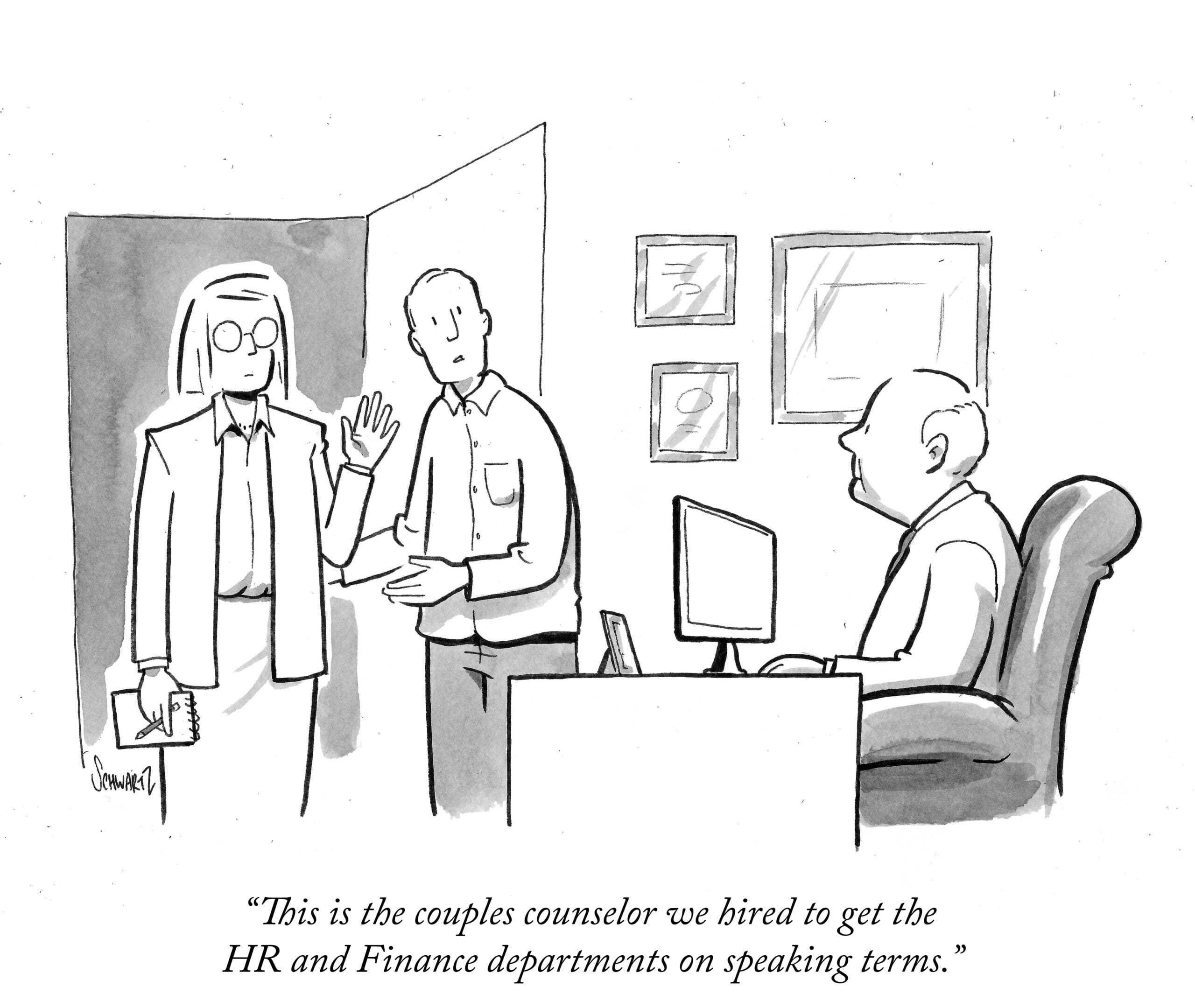Workplace trends
Is ‘fika’ the answer to work-life balance?
In Sweden, fika is a once- or twice-a-day ritual in which colleagues disconnect from work – storing away their phones and laptops – and casually engage in non- business related conversations over coffee, pastries, or other snacks. Swedish employees and managers say the cultural practice supports their well-being, productivity, and innovation by giving everyone some needed time to clear their minds and foster a sense of togetherness. There’s growing evidence supporting this claim, with a recent study by Massachusetts Institute of Technology finding that teams that scheduled 15-minute breaks together were 18% more communicative with one another through the workday than groups with staggered breaks, and annual turnover was significantly lower among teams that held collective breaks. As companies across the globe increase efforts to reinvigorate office life, fika seems to be finding its way into other workplaces across the globe as well.
Magic mushrooms are trending among some working women
A growing number of working moms are turning to psychedelics as a way to take care of their mental health, optimize their work-life balance, and ease career pressures. While mushrooms are still classified as a federally illegal substance in the U.S., restrictions have eased in some parts of the country, making the psychedelic drugs much easier to get access to. The result? For some women in high-powered jobs, microdosing psilocybin has become the new glass of wine. A number of these women claim it also helps with menopausal symptoms – including sleep, hot flashes, hormone imbalances, and mood swings – that had previously been affecting their work performance. While this trend is certainly gaining popularity in certain communities, scientists warn that the research is still in its infancy, so it’s best to explore the drug in a clinical setting.
The AI corner
AI is starting to train workers in AI
Generative AI has sparked a flurry of investment in corporate training programs designed to get employees skilled in the advanced technology and familiar with topics like responsible AI and prompt engineering. And as companies eagerly try to get their workforces up to speed on AI, many are now turning to AI itself to assist with the training. Organizations like Johnson & Johnson and Cisco Systems are actively looking into ways to incorporate AI-enabled training tools into their AI upskilling programs, including AI chatbot-tutors that answer questions on relevant topics, AI aids that provide personalized feedback and relevant video materials, and algorithms designed to assess strengths and weaknesses, identify skills gaps, and recommend appropriate courses for desired expertise. Companies say these generative AI tools are making training less one-way or top-down with the technology offering a more collaborative solution.
AI-generated images are getting flagged
As the world prepares for the 2024 election season amid a stream of AI tools that threaten to muddy the information ecosystem, Meta has announced its effort to identify and label AI-generated images posted on all of its platforms. The company has already put an “imagined with AI” label on photorealistic images created with its own AI generator tool, and in the coming months, it will start adding “AI generated” labels to images created by tools from Google, Microsoft, OpenAI, Adobe, Midjourney, and Shutterstock. As online information experts, lawmakers, and some tech leaders raise alarms about the new AI tools’ ability to produce realistic images, coupled with social media’s ability to rapidly disseminate content, this shift seems critical to avoiding the spread of false information, which could mislead voters ahead of this year’s elections in the United States and many other countries.
Navigating conflict involving your employees
By monday.com
It’s Valentine’s Day tomorrow, and while love is certainly in the air, this week’s newsletter is all about a topic essential to ensuring healthy, long-lasting relationships and positive dynamics: conflict resolution.
In any relationship, even the healthiest ones, conflicts naturally arise from time to time. And the workplace is no exception. Whether it’s a disagreement between teammates or tensions across hierarchies, conflict at work is essentially inevitable, and how it gets both addressed and resolved can truly define organizational culture, dynamics, and productivity.
As a manager, what you say – and don’t say – during a conflict really matters, which means you need to be extremely intentional about the way you navigate these situations. If your employees sense bias or feel that you’ve made up your mind before getting the full story, it can trigger distrust and long-lasting resentment – which is not healthy or sustainable.
So, how should you address conflicts involving your team members?
Communicate openly
Just like in any healthy relationship, communication is key. That’s why it’s so important to establish a culture on your team in which your employees feel comfortable coming to you about their concerns and challenges – to ensure that if and when conflicts arise, you can get looped in before things escalate. Building this kind of dynamic starts with small efforts like asking your employees how they’re doing during one-on-one meetings, embedding honest feedback into regular conversations, checking in to see when and how you can offer your employees support, and actively following up with them. All of the above helps set a foundation in which your team members can feel safe coming to you about anything, including conflicts, which ensures that issues don’t get pushed aside or get left brewing until they’re unresolvable.
Lead with questions
It’s nearly impossible to resolve a conflict when it feels like you’re being attacked. And the same is true at work. So when you witness or hear about a conflict with one of your team members, be careful not to approach them in a way that can come across as angry or accusatory. Be careful with your choice of words and avoid kicking off the conversation by simply sharing the negative feedback you received about them. Instead, ask questions and keep your initial takeaway pretty vague. For example, “I heard there was an intense disagreement about the strategy, so I wanted to check in. Do you want to tell me about what happened and how you’re feeling?” is much less attacking and triggering than “I heard you weren’t receptive to the new strategy, so I’d like an explanation.”
Additionally, in these early conversations, things are still pretty fresh so it’s important to simply make space for your employee to process what happened with you, rather than trying to jump to decisions or conclusions. Give them the chance to share so that you can get the information you need to determine how to act in the most appropriate and effective way.
Pause to process
If a team member comes to you about a conflict, it’s extremely important to avoid taking a clear stance before you have all of the context. Of course you can immediately validate their feelings, but try not to respond impulsively or say something that could wind up being held against you later on. When it’s the first time you’re hearing about the conflict, take a moment to digest the information and then respond in a way that acknowledges their feelings and conveys that you’re going to do something about it without explicitly taking a side. For example, “Wow, that’s a lot to digest. I’m really sorry this happened and that you’re feeling so frustrated. I’m going to look into everything and then follow up with you so that we can figure out together how to resolve this and ensure you don’t feel this way again.” Then, you can talk about the steps you plan to take to gain a better understanding of what happened and support your team member in resolving the issue.
Try to stay objective
Regardless of your personal experiences or perceptions of any of the individuals involved in a particular conflict, recognize that your role as the manager is to help your employees resolve the issue – not to simply determine who’s to blame or most at fault. So when a conflict arises, try to guide the conversation in a way that focuses on the facts and what happened in that specific scenario, rather than allowing personal judgments or opinions to cloud solutions. Your choice of words is really important here so try not to say “always” and “never,” and help your employees lead with “I” as opposed to focusing on what the other people in the conflict did or said. The more objective you can be when discussing the conflict, the greater the likelihood of identifying the source of the problem and resolving it quickly.
Encourage your employees to take ownership
Conflicts can’t get resolved unless everyone involved feels like the solution resonates with them, which is why it’s so important not to try and fix things yourself. Recognize that your part as the manager is to help your team members find solutions on their own when possible so that they can actually learn and grow from the experience. Of course you should be there to listen and help them identify their underlying feelings and frustrations, but do your best to encourage them to take responsibility in resolving these delicate situations.
A great way to do this is by asking intentional questions that empower your employees to recognize their power in improving the situation going forward. For example, “What do you think will make you feel better going forward,” “What do you think you would do differently if something like this happens again,” and “How do you want to talk about it with the other people involved?” Ultimately no one enjoys unhealthy relationships at work, and when your team members feel like they played a key role in resolving the issue, they are way more likely to walk away feeling empowered and satisfied.
Celebrate healthy resolution
Recognize that conflicts are an opportunity to improve the status quo and build stronger relationships within your organization. The most effective teams are those in which individuals can feel comfortable respectfully disagreeing with one another and expressing different opinions because that’s what spurs innovation and stronger decision-making. Conflict resolution requires skills that are essential to workplace success like thoughtful analysis, problem solving, and effective collaboration, so help your team members see the value in these experiences and in the power of achieving constructive resolution together.
On that note, be sure to give credit to your employees who manage to successfully resolve conflicts and handle themselves in a professional way to signal the kind of behavior that’s valued on your team.
Water cooler chatter
The world experienced its warmest January on record, per the European Union’s climate change monitoring service. This exceptional month came after 2023 was already ranked as the planet’s hottest year in global records going back to 1850.
Finnair is starting to weigh willing passengers at the gate as part of a trial program to improve plane weight estimates. These weigh-ins are anonymous and not linked to individual bookings or passenger data.
Question of the week
Last week’s answer: McDonalds and Amazon
This week’s question: What percent of adults have had a workplace romance?
Just for laughs

Couples counseling – work edition
Don’t miss more quality content!

